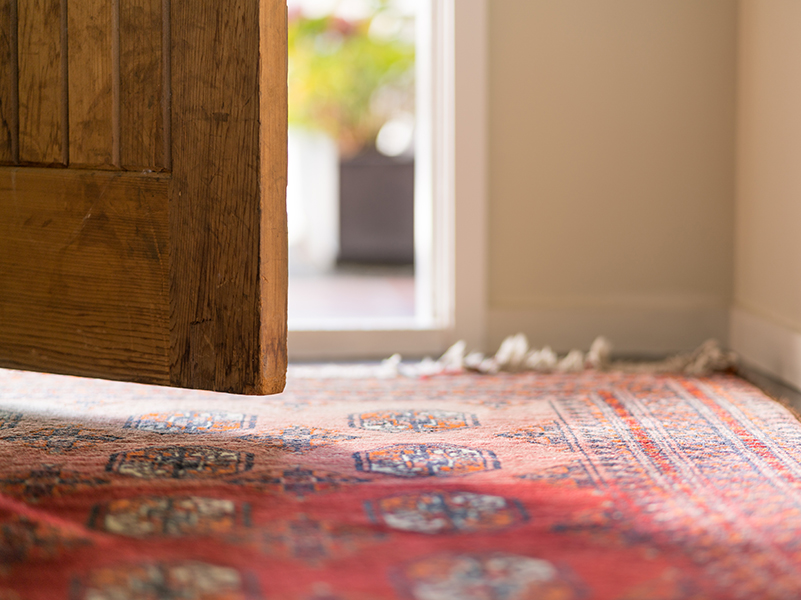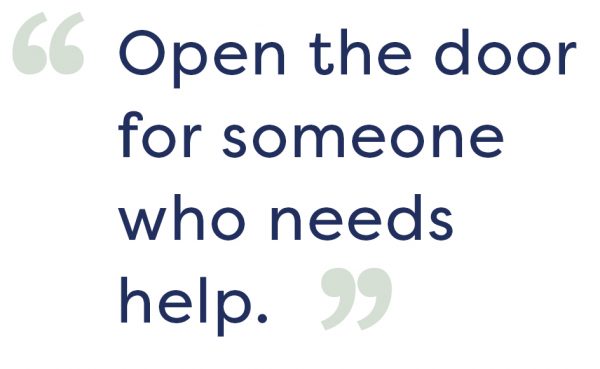Hoarding: What’s behind the door?

The ‘loner’ in your neighbourhood may actually be struggling with a common – but little understood – mental health issue; here’s how you can open the door to them and find out.
When I think about hoarding I always remember the scene from Home Alone when Macaulay Culkin’s character Kevin gets talking to his elderly neighbour.
The man’s a loner and Kevin’s been scared of him for the whole film, just because he keeps himself to himself and people don’t understand him. When they start talking though, Kevin realises the old man is actually just lonely and misunderstood.
It just shows – you really don’t know what’s going on behind a closed door and, in some cases, it could be someone that’s in need of a helping hand but just doesn’t know how to ask.
A problem that shouldn’t be swept under the rug
Although hoarding is rarely talked about – and was only recently classified as a mental health issue at all – it’s actually much more common than people realise. Around 2-5% of the population, which is over 1.2 million people in the UK alone, are struggling – and in reality that number is probably even higher.
When it’s severe, hoarding can have a massive impact on a person’s quality of life and become a great source of pain for the sufferers, their families and society.
You can find out more about some of the myths around hoarding here but the first step to opening the door and helping others is being able to spot that they actually need help at all.
How it might look
Obviously the key sign of hoarding is often keeping and collecting objects that don’t seem to have any value, but someone who is hoarding may not let people into their house, so this may be something you don’t realise until a bit further down the line.
This brings me nicely on to my second point, which is that the person may be isolating themselves because of shame or fear. Of course withdrawing could happen for any number of reasons and even if it’s not hoarding, it may still be a sign they need support.
You might see the person bringing home lots of things that don’t seem to have any value and if you are welcomed into their home, you’ll probably see that they struggle to get rid of seemingly small, unimportant objects.
Because of this they might not be able to use some parts of their home, and may get distressed at someone else coming in or touching their things.
You might notice problems in other areas too, either because of, or as well as, the hoarding – such as that the person struggles with everyday tasks and doesn’t go out that often.
What might be hoarded
What someone might hoard is very varied but it does tend to be lower-value items, like newspapers, letters, receipts, plastic bags, household supplies, and even animals – which they are trying to help but might not actually be able to care for properly.
How they might feel
Someone who’s struggling with hoarding may well be putting emotional attachment onto objects, so are likely to feel ‘better’ and get a rush when they get something new.
On the other hand, they might then feel upset and anxious when they try – or are asked – to get rid of things.
They might also find it very hard to decide what to keep or get rid of and become indecisive, and the things they keep will probably be quite disorganised and take up a lot of room – which is a key difference between hoarding and collecting.
The impact it can have
In extreme cases, hoarding interferes with living space and day-to-day life, such as having space to prepare food or even sleep.
It can also mean that important visits – like social workers and maintenance calls like servicing utilities, repairing leaks and dealing with infestations – can’t be carried out. This can lead to huge problems with fire and trip hazards, and can create lots of problems with hygiene and keeping the home clean.
Financial implications may include not having access to paperwork, leading to unpaid bills and potential legal complications.
Obviously this all has a huge impact on the person’s mental health and often causes loneliness and shame, as people might isolate themselves because they don’t want to let anyone see into their home. All of this can then lead to things like relationship breakdowns too.
If you, or someone you care about, is struggling with hoarding it’s more than just a case of needing a good tidy up. In fact, even if someone came in and blitzed the place without dealing with the root issue, the problem will probably just return.
How we can help
The good news is there is help available – and it can be really successful helping people overcome their hoarding issues.
Our award-winning hoarding support project, Outside the Box, is an innovative approach to helping our customers manage hoarding behaviour.
Our dedicated team provide an intensive support service alongside therapeutic intervention (cognitive behavioural therapy) for our tenants who have too many possessions. So, if you’re struggling or you know someone who is, please get in touch.
Find out more about the support we can offer around hoarding or make a self-referral to our service


